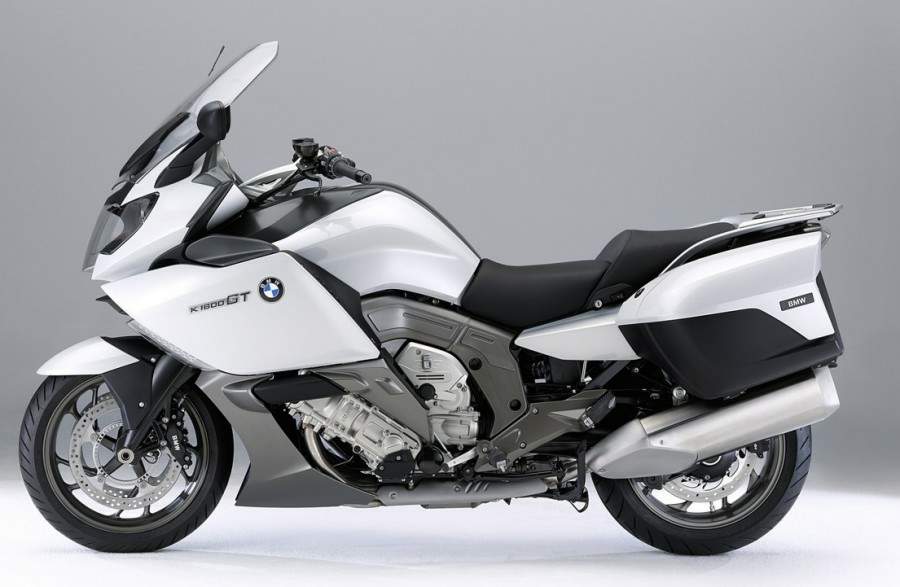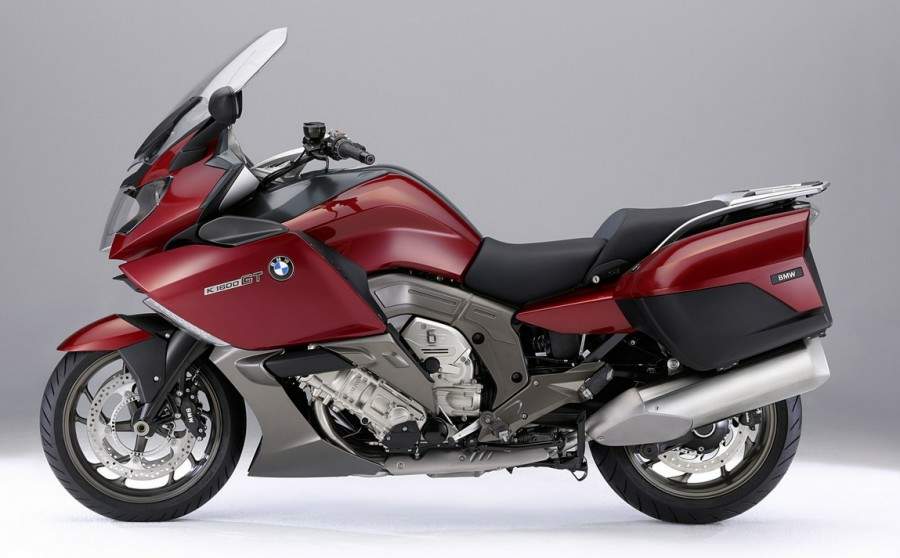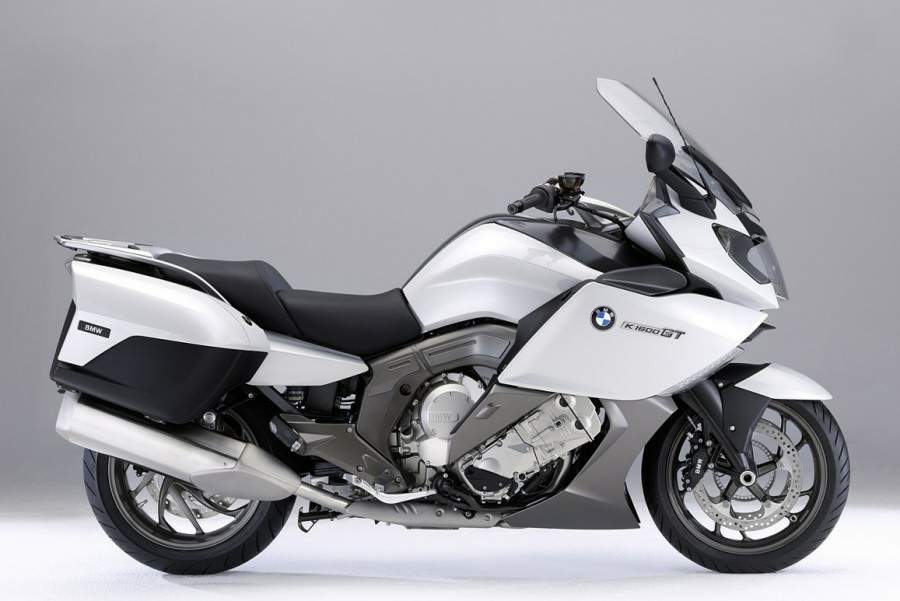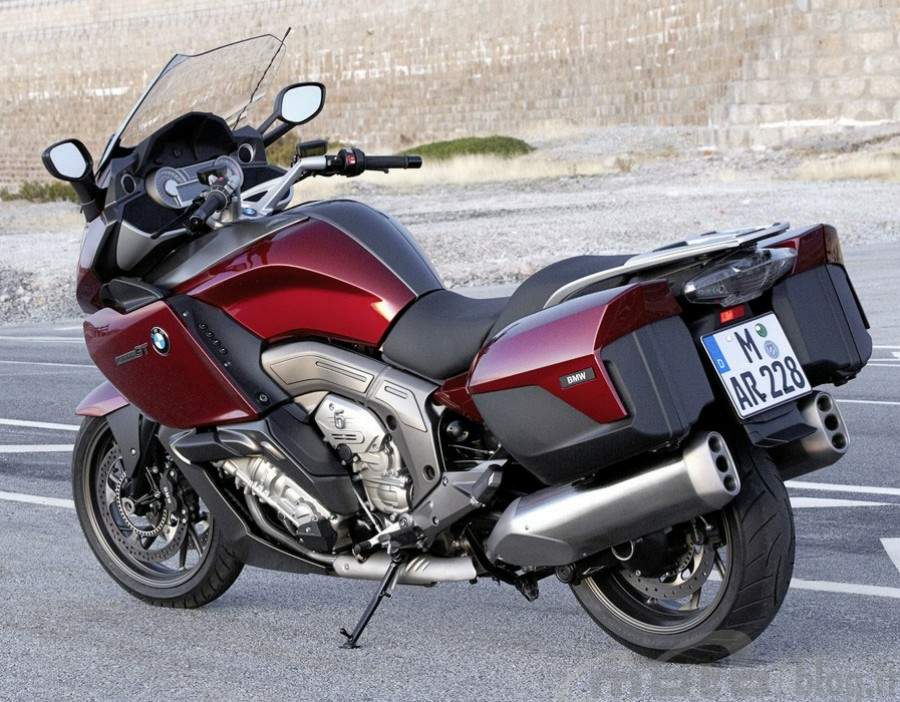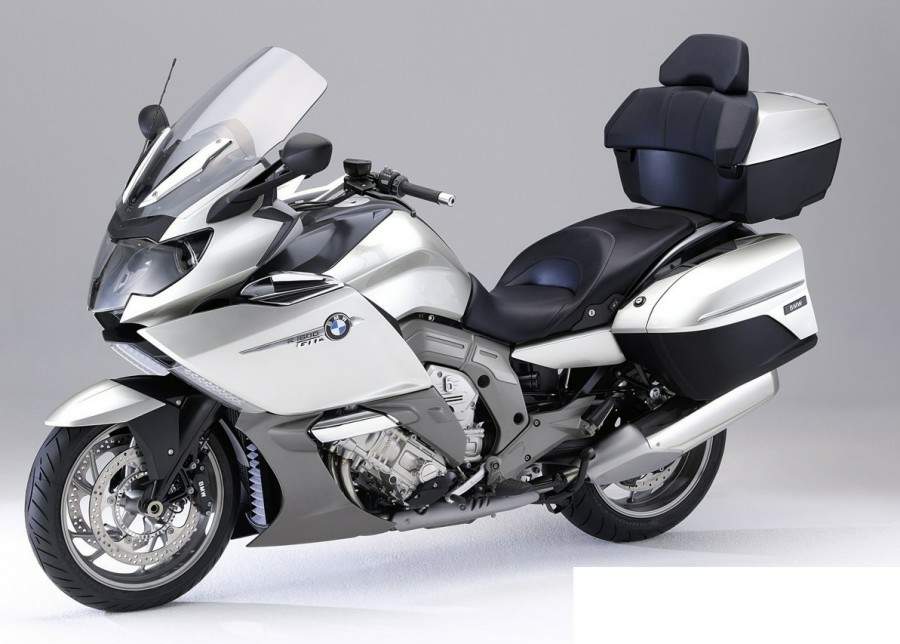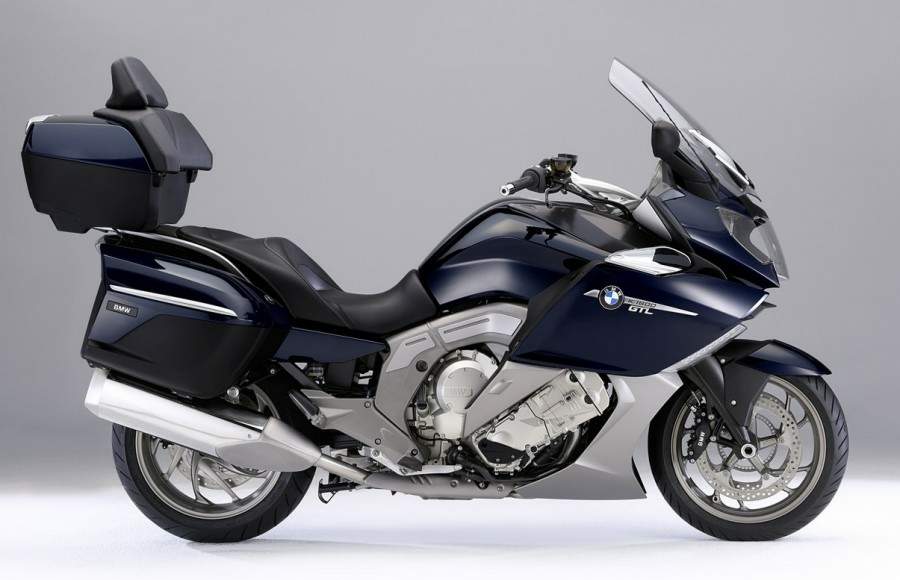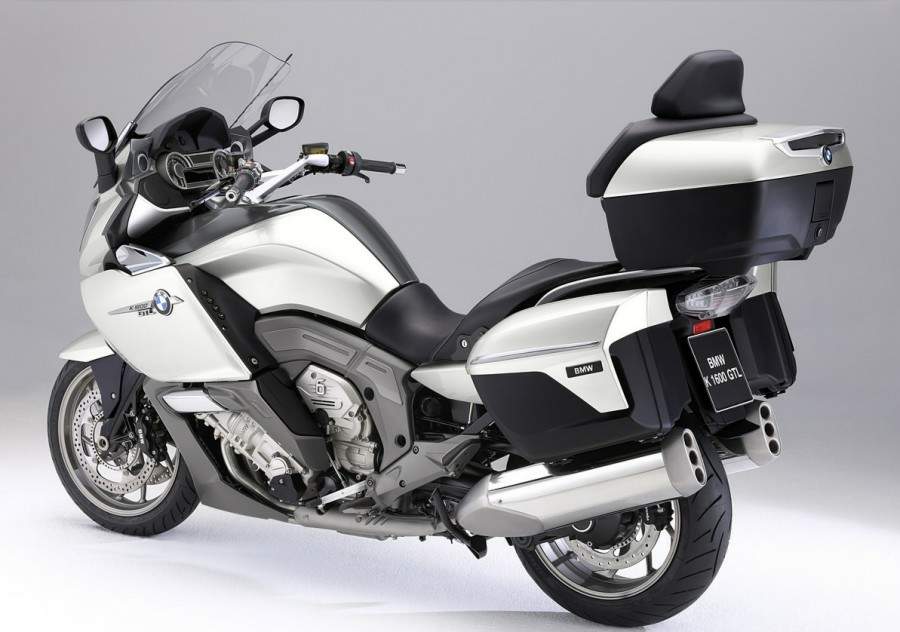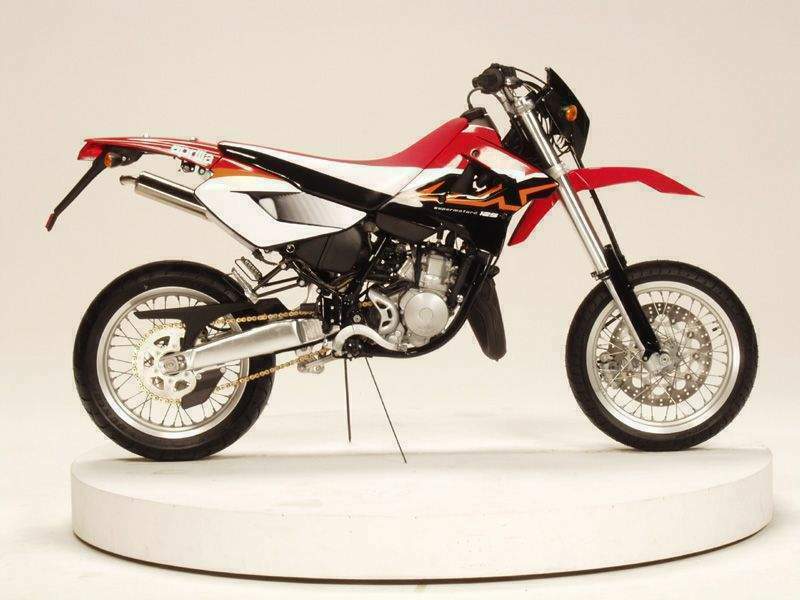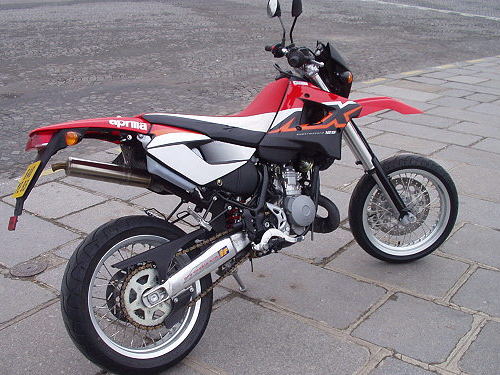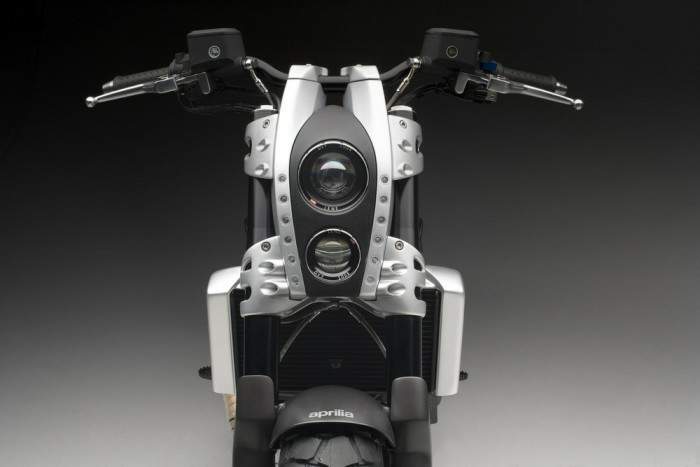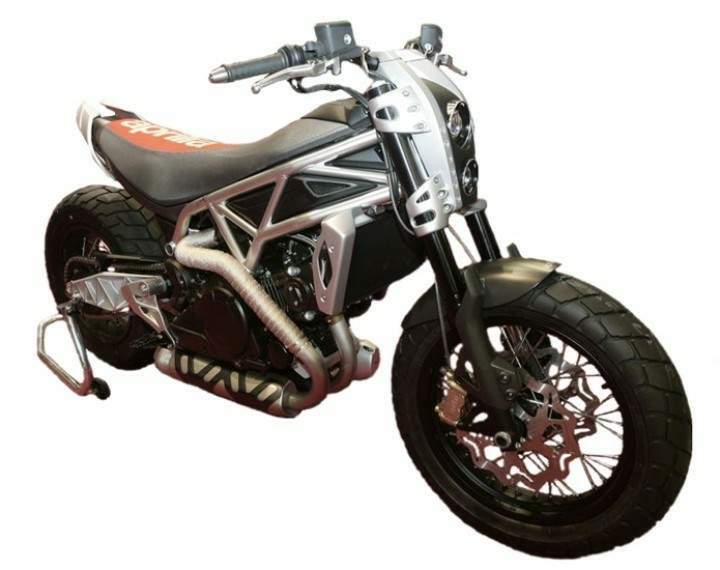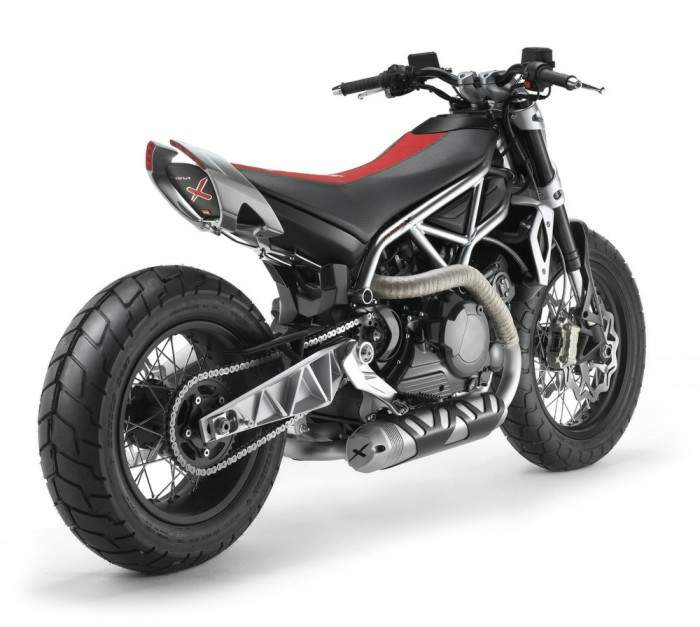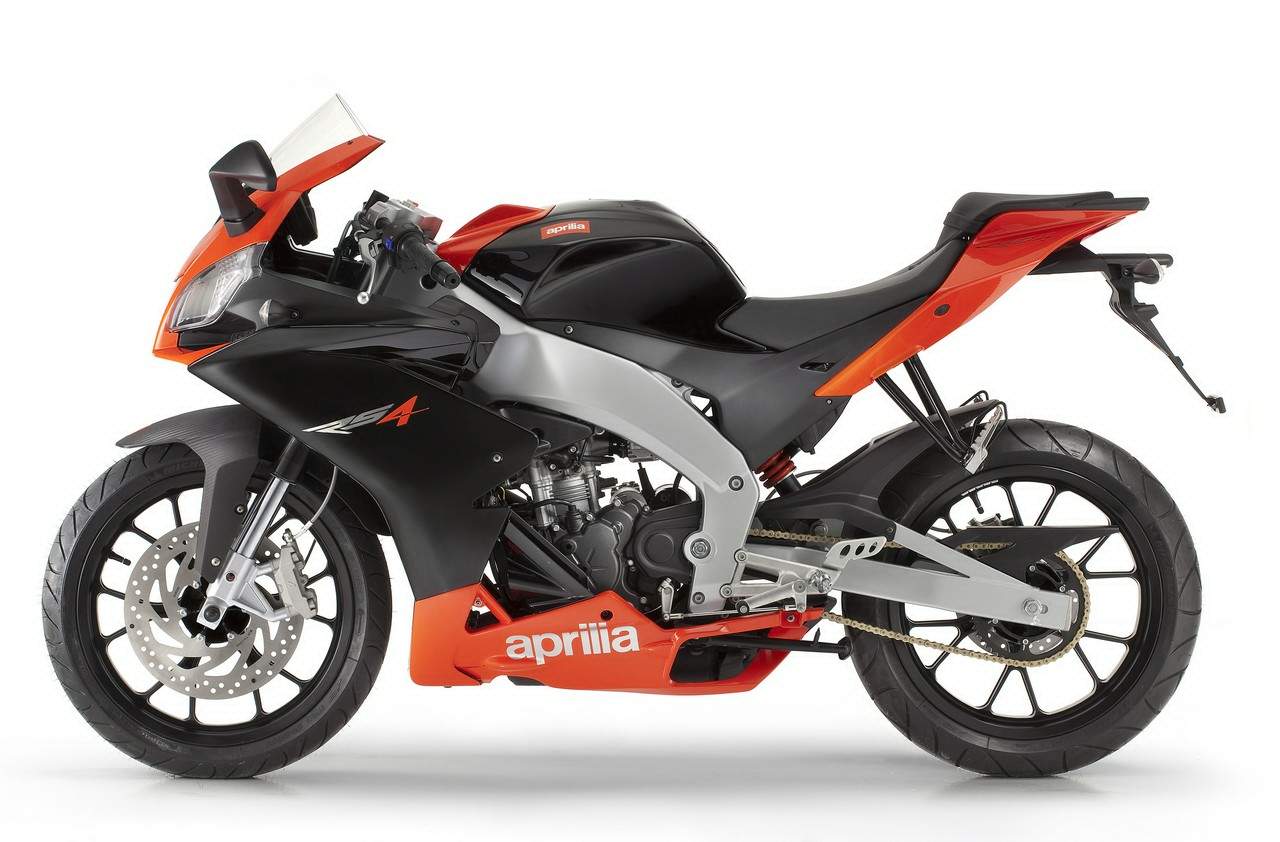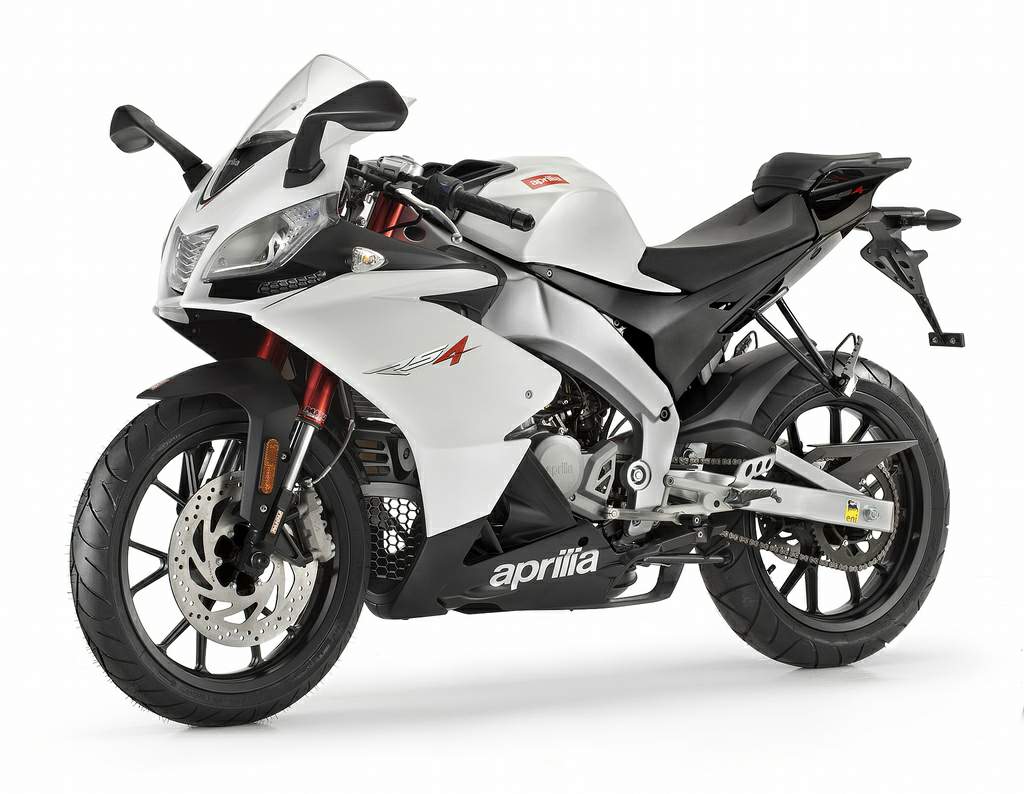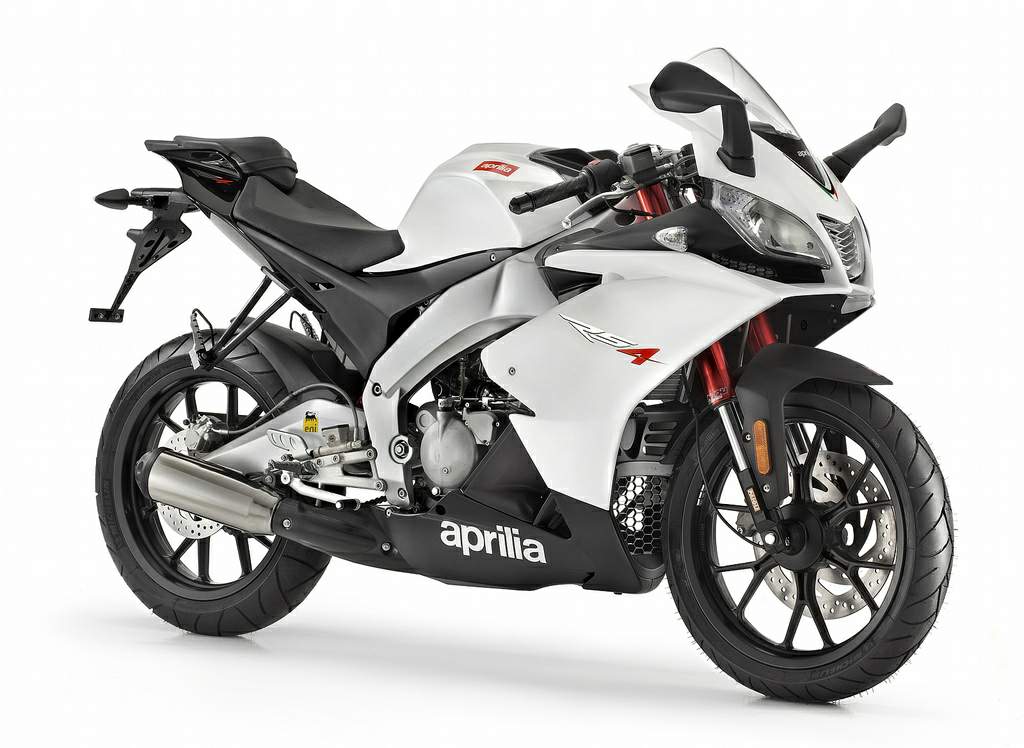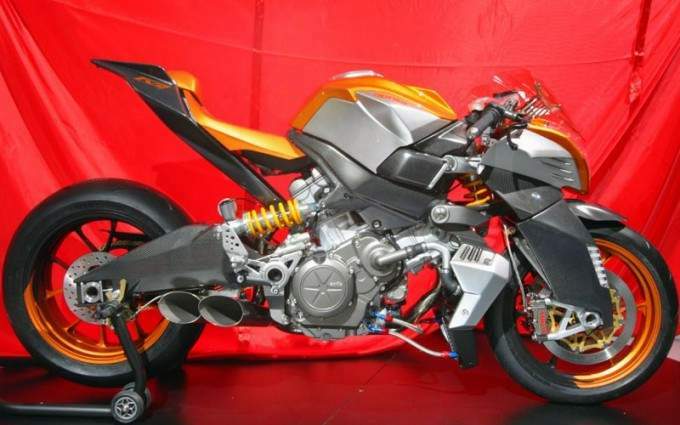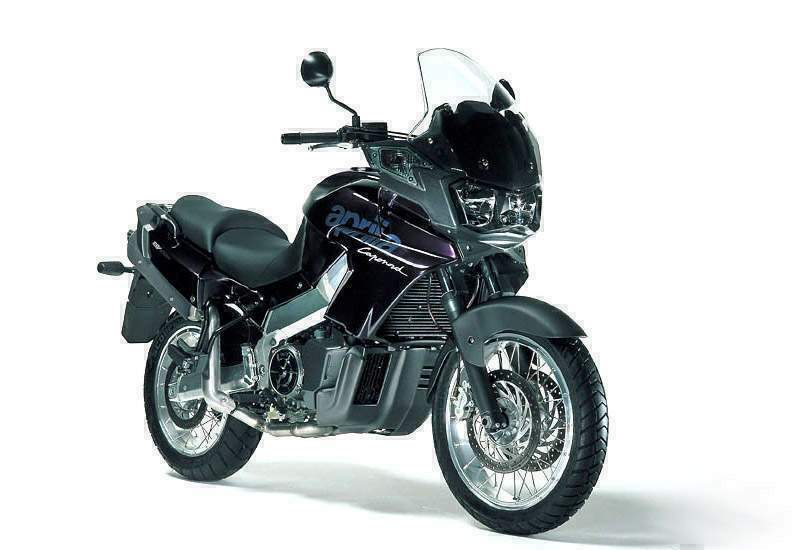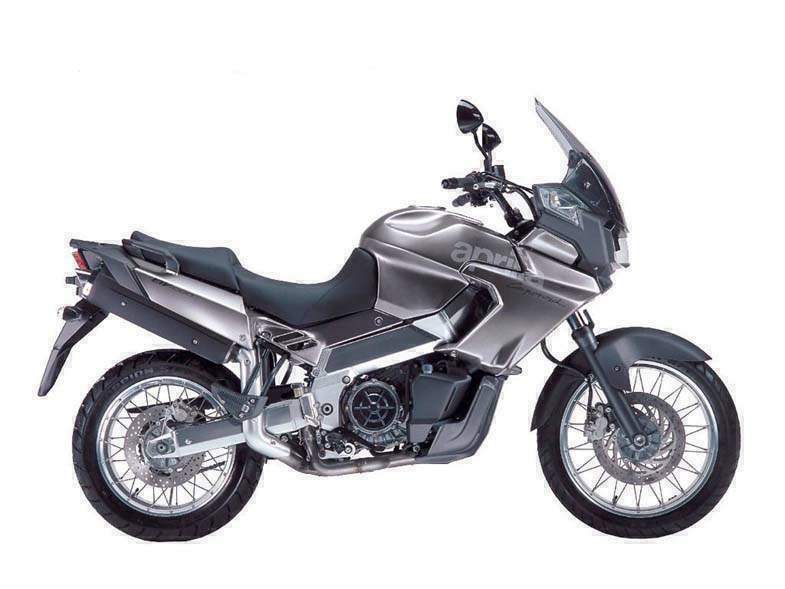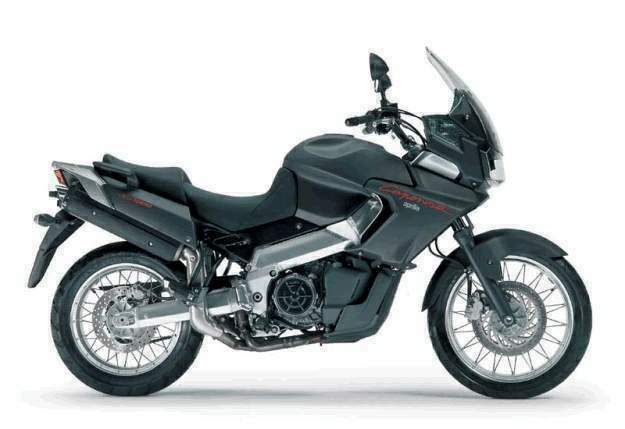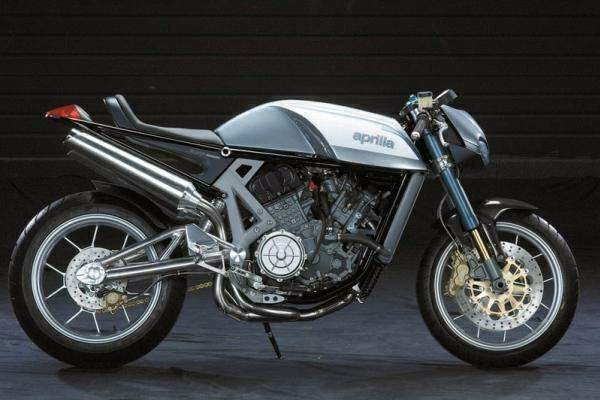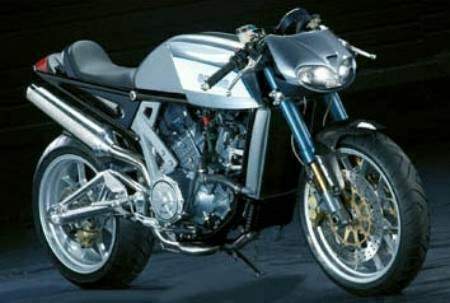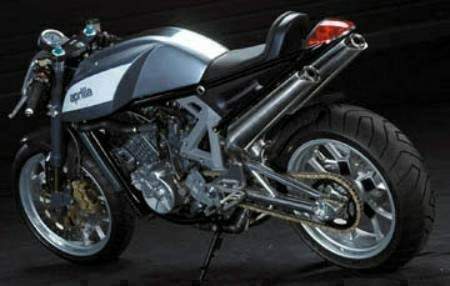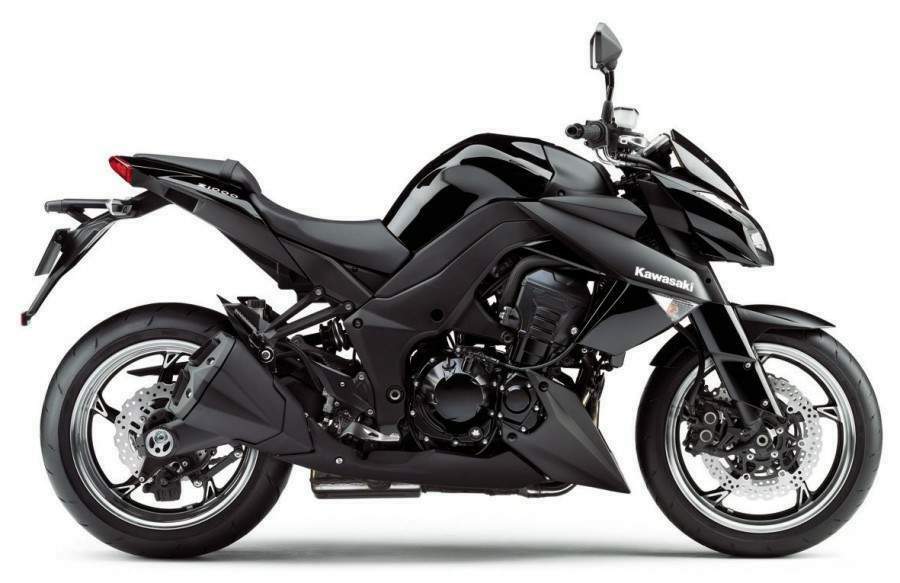The Aprilia Tuono V4R is an evil looking high-performance sports bike which is basically the unfaired version of the Aprilia RSV4 R.
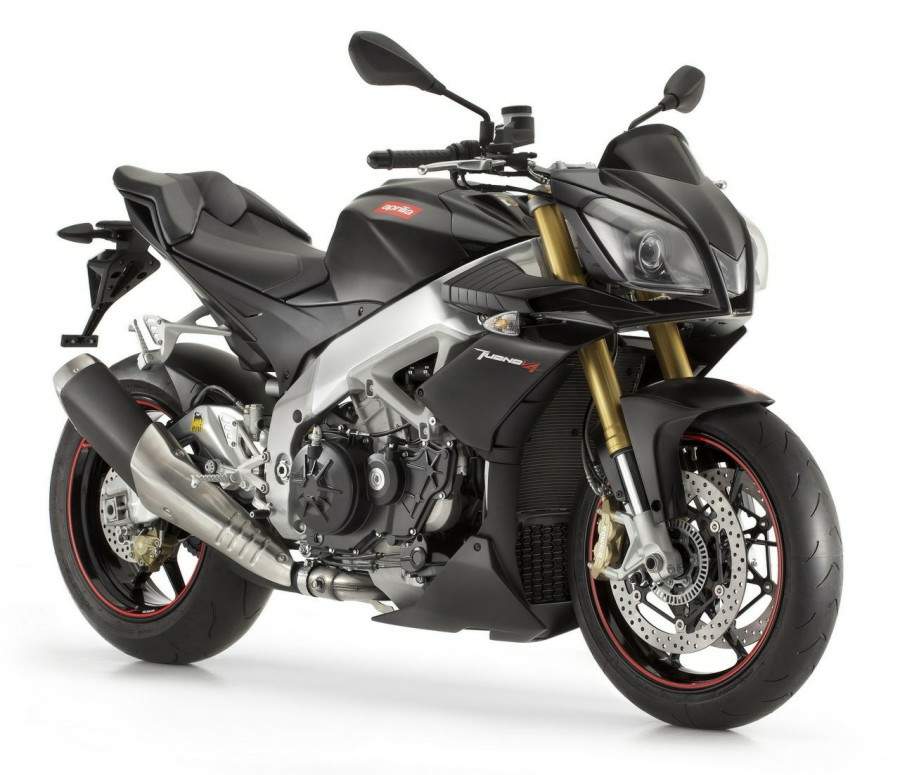
The Aprilia Tuono V4R boasts power never before installed on a factory naked bike, obtained by reconfiguring the RSV4 Factory APRC SE four V cylinder. The Tuono V4R uses features from the Special Edition including the new exhaust system with bypass valve, which is two kilos lighter than the system used on the RSV4 R, and latest generation Ride by Wire throttle control. Differences from its race track sibling are closer spacing between the first three gear ratios, and a maximum torque output of 110 Nm on tap 1,000 rpm lower. The Aprilia Tuono V4R features the same tail fairing, saddle, tank and side panels as Aprilia's WSBK racing machine.
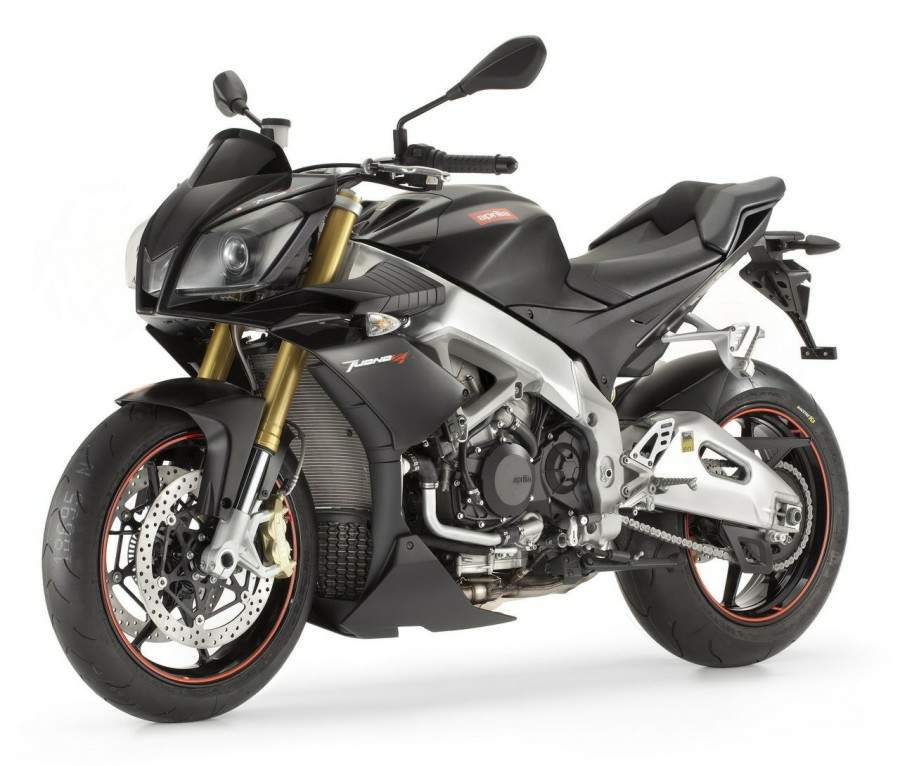
The Tuono V4R uses the second generation version of Aprilia's APRC (Aprilia Performance Ride Control) joystick - an electronic dynamics control package developed by Aprilia to get as close as possible to the physical limits of riding. APRC is based on an automotive inertia sensor platform, with two gyrometers and two accelerometers allowing the ECU to determine the dynamic state of the motorcycle and control engine torque accordingly to help the rider exploit the full performance potential of the bike in all conditions.
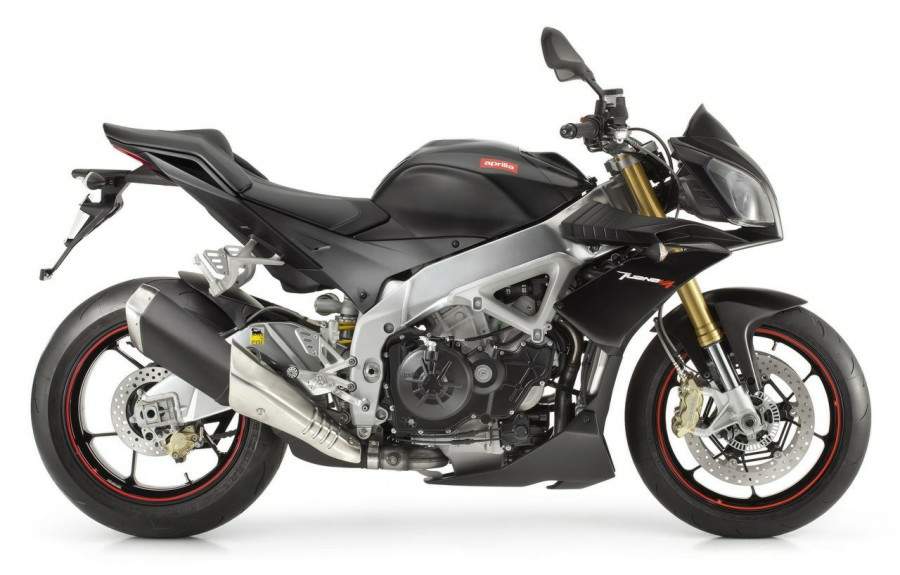
The APRC package of the Tuono V4R includes ATC traction control (Aprilia Traction Control), with eight selectable levels, which controls sliding when accelerating out of a curve in relation to bank angle and throttle aperture, AWC (Aprilia Wheelie Control), which helps the rider control extreme wheelying by gradually bringing the front wheel back to the ground, and AQS (Aprilia Quick Shift), which allows instantaneous upshifts without closing the throttle or using the clutch. Completing the suite of four functions is the most exhilarating of all: ALC (Aprilia Launch Control).

The Aprilia Tuono V4R also features a range of top-spec chassis components, including a Brembo brake system with radial callipers and 320 mm floating discs at the front (220 mm at the rear), aluminium wheels with an all-new design weighing 2 Kg less than those on the RSV4R, Sachs upside down front fork with 43 mm stanchions coated with titanium nitride for reduced friction, and Sachs shock absorber with separate piggy back nitrogen canister featuring adjustable spring preload, compression and rebound damping and length, to modify the setup of the bike to suit different riding styles or for when carrying a pillion.
Year
2011
Engine
Liquid cooled, four stroke, longitudinal 65° V four , DOHC, 4 valves per cylinder
Capacity
998,9
Bore x Stroke 78 x 52,3 mm
Compression Ratio 13.0:1
Induction
Airbox with front dynamic air intakes.
4 Weber-Marelli 48-mm throttle bodies with 4 injectors
and latest generation Ride-by-Wire engine
management.
Choice of three different engine maps selectable by the rider with bike in motion: T (Track), S (Sport), R (Road)
Ignition / Starting
Magneti Marelli digital electronic ignition system integrated in engine control system, with one spark plug per cylinder and "stick-coil" type coils Electric. / electric
Exhaust 4 into 2 into 1 layout, single oxygen sensor, lateral single silencer with engine management system controlled butterfly valve and integrated trivalent catalytic converter (already meets future Euro4 regulations)
Clutch Multiplate wet clutch with mechanical slipper system
Max Power
162 hp 119 kW @ 11000 rpm
Max Torque
110 Nm @ 9000 rpm
Transmission / Drive
6 Speed / chain
Gear Ratio 1st: 39/15 (2.600) 2nd: 33/16 (2.063) 3rd: 34/20 (1.700) 4th: 32/22 (1,455) 5th: 34/26 (1,308) 6th: 33/27 (1,222)
Steering angle / Trail 24.5° / 105 mm
Frame Aluminium dual beam chassis with pressed and cast
sheet elements. Sachs steering damper.
Front Suspension
Sachs upside down front fork with 0 43 mm stanchions. Low profile forged aluminium calliper mountings for radial callipers. Completely adjustable spring preload and hydraulic compression and rebound damping. 120mm wheel travel.
Rear Suspension
Double braced aluminium swingarm; mixed low thickness and sheet casting technology. Sachs piggy back monoshock with completely adjustable: spring preload and hydraulic compression and rebound damping. APS progressive linkage. 130mm wheel travel.
Front Brakes
2x 320 mm floating stainless steel discs with lightweight stainless steel rotor with 6 studs. Brembo radial callipers with 4 0 horizontally opposed 32 mm pistons. Sintered pads. Axial pump master cylinder and metal braided brake hoses.
Rear Brakes
Single 220-mm diameter disc; Brembo floating calliper with two 032 mm isolated pistons. Pump with integrated tank and metal braided hose
Front Tyre
120/70 ZR17
Rear Tyre
190/55 ZR 17 (alternative: 190/50 ZR 17; 200/55
ZR 17)
Seat Height 840 mm
Cerb-Weight
179 kg
Fuel Capacity (res)
17 litres (4-litre reserve included)
More about → Aprilia Tuono V4R

The Aprilia Tuono V4R boasts power never before installed on a factory naked bike, obtained by reconfiguring the RSV4 Factory APRC SE four V cylinder. The Tuono V4R uses features from the Special Edition including the new exhaust system with bypass valve, which is two kilos lighter than the system used on the RSV4 R, and latest generation Ride by Wire throttle control. Differences from its race track sibling are closer spacing between the first three gear ratios, and a maximum torque output of 110 Nm on tap 1,000 rpm lower. The Aprilia Tuono V4R features the same tail fairing, saddle, tank and side panels as Aprilia's WSBK racing machine.

The Tuono V4R uses the second generation version of Aprilia's APRC (Aprilia Performance Ride Control) joystick - an electronic dynamics control package developed by Aprilia to get as close as possible to the physical limits of riding. APRC is based on an automotive inertia sensor platform, with two gyrometers and two accelerometers allowing the ECU to determine the dynamic state of the motorcycle and control engine torque accordingly to help the rider exploit the full performance potential of the bike in all conditions.

The APRC package of the Tuono V4R includes ATC traction control (Aprilia Traction Control), with eight selectable levels, which controls sliding when accelerating out of a curve in relation to bank angle and throttle aperture, AWC (Aprilia Wheelie Control), which helps the rider control extreme wheelying by gradually bringing the front wheel back to the ground, and AQS (Aprilia Quick Shift), which allows instantaneous upshifts without closing the throttle or using the clutch. Completing the suite of four functions is the most exhilarating of all: ALC (Aprilia Launch Control).

The Aprilia Tuono V4R also features a range of top-spec chassis components, including a Brembo brake system with radial callipers and 320 mm floating discs at the front (220 mm at the rear), aluminium wheels with an all-new design weighing 2 Kg less than those on the RSV4R, Sachs upside down front fork with 43 mm stanchions coated with titanium nitride for reduced friction, and Sachs shock absorber with separate piggy back nitrogen canister featuring adjustable spring preload, compression and rebound damping and length, to modify the setup of the bike to suit different riding styles or for when carrying a pillion.
Aprilia Tuono V4R Features:
Year
2011
Engine
Liquid cooled, four stroke, longitudinal 65° V four , DOHC, 4 valves per cylinder
Capacity
998,9
Bore x Stroke 78 x 52,3 mm
Compression Ratio 13.0:1
Induction
Airbox with front dynamic air intakes.
4 Weber-Marelli 48-mm throttle bodies with 4 injectors
and latest generation Ride-by-Wire engine
management.
Choice of three different engine maps selectable by the rider with bike in motion: T (Track), S (Sport), R (Road)
Ignition / Starting
Magneti Marelli digital electronic ignition system integrated in engine control system, with one spark plug per cylinder and "stick-coil" type coils Electric. / electric
Exhaust 4 into 2 into 1 layout, single oxygen sensor, lateral single silencer with engine management system controlled butterfly valve and integrated trivalent catalytic converter (already meets future Euro4 regulations)
Clutch Multiplate wet clutch with mechanical slipper system
Max Power
162 hp 119 kW @ 11000 rpm
Max Torque
110 Nm @ 9000 rpm
Transmission / Drive
6 Speed / chain
Gear Ratio 1st: 39/15 (2.600) 2nd: 33/16 (2.063) 3rd: 34/20 (1.700) 4th: 32/22 (1,455) 5th: 34/26 (1,308) 6th: 33/27 (1,222)
Steering angle / Trail 24.5° / 105 mm
Frame Aluminium dual beam chassis with pressed and cast
sheet elements. Sachs steering damper.
Front Suspension
Sachs upside down front fork with 0 43 mm stanchions. Low profile forged aluminium calliper mountings for radial callipers. Completely adjustable spring preload and hydraulic compression and rebound damping. 120mm wheel travel.
Rear Suspension
Double braced aluminium swingarm; mixed low thickness and sheet casting technology. Sachs piggy back monoshock with completely adjustable: spring preload and hydraulic compression and rebound damping. APS progressive linkage. 130mm wheel travel.
Front Brakes
2x 320 mm floating stainless steel discs with lightweight stainless steel rotor with 6 studs. Brembo radial callipers with 4 0 horizontally opposed 32 mm pistons. Sintered pads. Axial pump master cylinder and metal braided brake hoses.
Rear Brakes
Single 220-mm diameter disc; Brembo floating calliper with two 032 mm isolated pistons. Pump with integrated tank and metal braided hose
Front Tyre
120/70 ZR17
Rear Tyre
190/55 ZR 17 (alternative: 190/50 ZR 17; 200/55
ZR 17)
Seat Height 840 mm
Cerb-Weight
179 kg
Fuel Capacity (res)
17 litres (4-litre reserve included)
